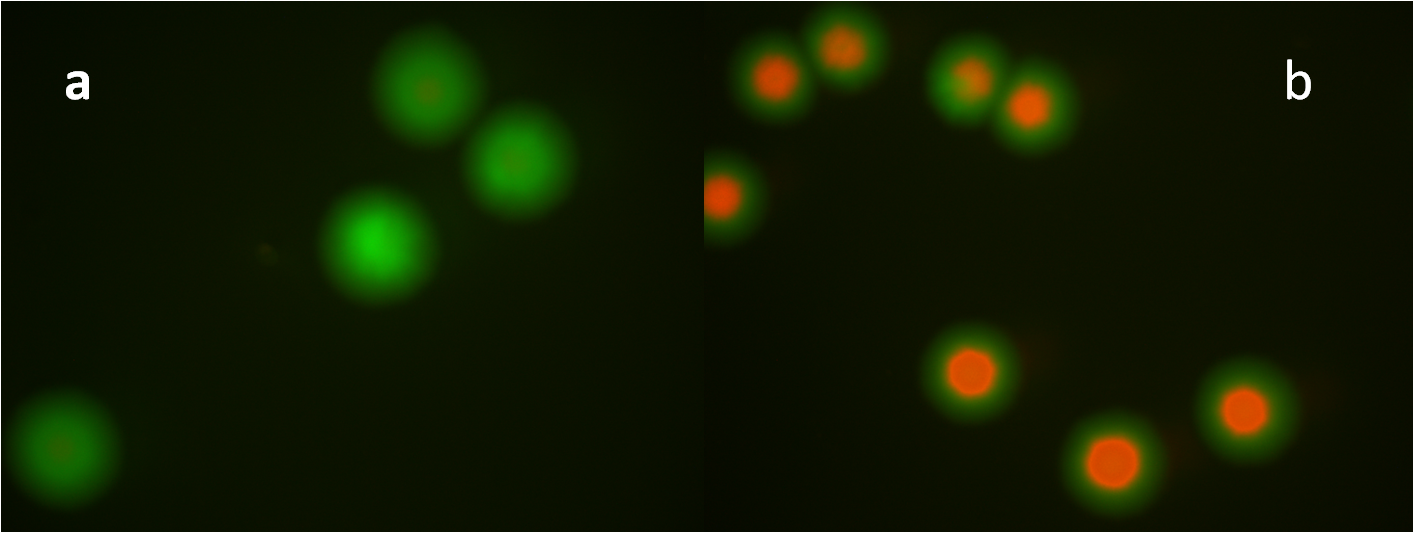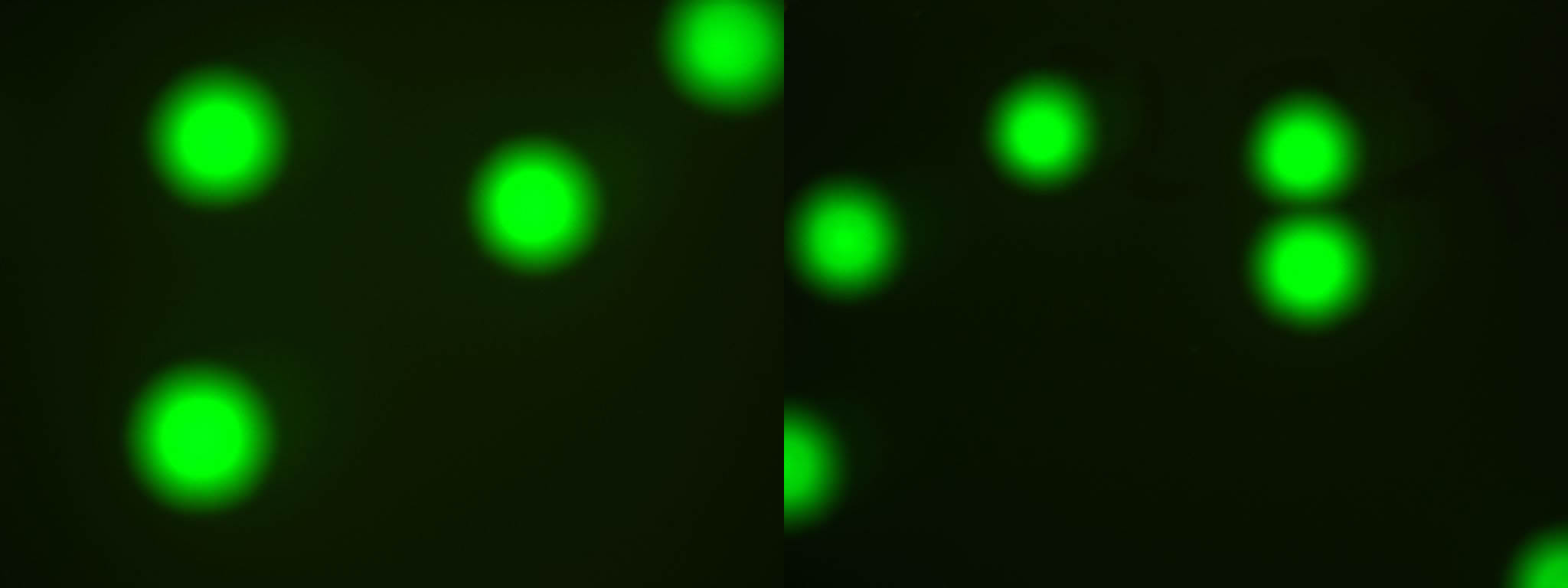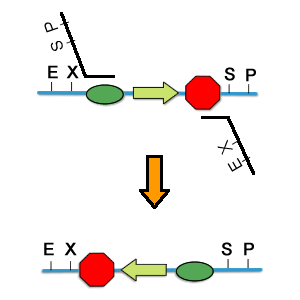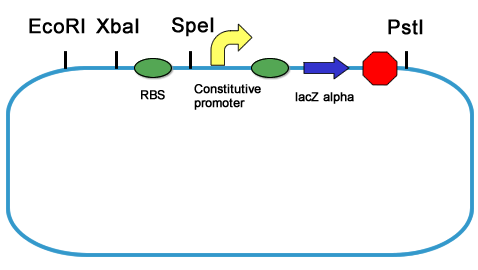Team:PKU Beijing/Parts/Parts improvement
From 2009.igem.org
(→The Reversed Standard) |
|||
| (9 intermediate revisions not shown) | |||
| Line 2: | Line 2: | ||
{{PKU_Beijing/Sidebar_Parts}} | {{PKU_Beijing/Sidebar_Parts}} | ||
{{PKU_Beijing/Header2}} | {{PKU_Beijing/Header2}} | ||
| + | [[Team:PKU_Beijing/Parts|Parts]] > [[Team:PKU_Beijing/Parts/Parts_improvement|Parts improvement]] | ||
==='''The Reversed Standard'''=== | ==='''The Reversed Standard'''=== | ||
| Line 8: | Line 9: | ||
What if the prefix and suffix are reversed? At the first sight, it may seem stupid to do this. | What if the prefix and suffix are reversed? At the first sight, it may seem stupid to do this. | ||
| - | However, it is a quite useful strategy to avoid interference in your synthetic system. We have, in our project, used this method to construct the sensor part. The activator (repressor) expression set is in an opposite direction of the inducible promoter. This avoids | + | However, it is a quite useful strategy to avoid interference in your synthetic system. We have, in our project, used this method to construct the sensor part. The activator (repressor) expression set is in an opposite direction of the inducible promoter. This avoids the constitutive expressing promoter (repressor) leaking down. |
[[Image:PKU_Reverse.png|500px|center]] | [[Image:PKU_Reverse.png|500px|center]] | ||
| Line 19: | Line 20: | ||
[[Image:PKU_Houjie.png|600px|center|thumb|Fig3. Bistable switch downstream of the AND Gate]] | [[Image:PKU_Houjie.png|600px|center|thumb|Fig3. Bistable switch downstream of the AND Gate]] | ||
[[Image:PKU_XP1_No_Yes.jpg|600px|center|thumb|Fig4. Result of Bistable switch downstream of the AND Gate, left to right is the not induced group and induced group]] | [[Image:PKU_XP1_No_Yes.jpg|600px|center|thumb|Fig4. Result of Bistable switch downstream of the AND Gate, left to right is the not induced group and induced group]] | ||
| + | |||
| + | [[Image:PKU_PCR_Reverse.png|400px|left| thumb|fig5. PCR to reverse a part]] | ||
We explain the phenomenon as below: | We explain the phenomenon as below: | ||
| - | The terminator is to some extent leaky, so when bistable switch is upstream, it can increase the expression level of both T7ptag and SupD, so that the AND Gate outputs more to trigger the bistable switch. Thus the colonies turn read when induced. In addition, the constitutive promoter that expresses the activator can also increase the CI level. However, when the bistable switch is downstream, it is the promoters in the AND Gate can leak downstream and enhance the CI434 state, while the bistable has little effect on the AND Gate. | + | The terminator is to some extent leaky, so when bistable switch is upstream, it can increase the expression level of both T7ptag and SupD, so that the AND Gate outputs more to trigger the bistable switch. Thus the colonies turn read when induced. In addition, the constitutive promoter that expresses the activator can also increase the CI level. However, when the bistable switch is downstream, it is the promoters in the AND Gate can leak downstream and enhance the CI434 state, while the bistable has little effect on the AND Gate. |
| + | |||
| + | With the reversed standard, we can arrange the transcription direction of each part, which, in simple systems, can totally avoid interference. For complex systems like ours, it can also help out.For complex systems like ours, it can also help out by reducing the interferences that we should consider. | ||
| + | |||
| + | Parts can be reversed by PCR. As shown in Fig5. Actually, for basic parts, we can assembly them in the normal way, and it is after the completion of one expression set that we consider to reverse the whole costruct. | ||
==='''The Blue White Screening Plasmid'''=== | ==='''The Blue White Screening Plasmid'''=== | ||
Latest revision as of 13:50, 21 October 2009
|
||||||||||||||
|
||||||||||||||
 "
"







